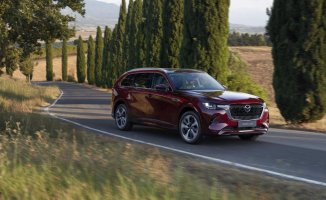Ford has announced the marketing of its Mustang Mach-E with an autonomous steering system. In theory, the driver will be able to take his hands off the wheel... on the highway. It is one more step towards the self-driving car, capable of taking us from one place to another without driver intervention. It will be enough to enter the destination point for the vehicle to take us there, while we sleep, read or simply relax looking at the landscape.
Today's new cars incorporate numerous driving aids, such as the automatic parking system, emergency braking assistant, adaptive speed control, fatigue detector, etc. However, these are technologies that do not exempt you from having your hands behind the wheel and paying attention to the road.
Gavin Jackson, director of OXA, a company dedicated to driving automation, has admitted that “the industry is a long way from autonomous cars being able to operate anywhere.” And very far means a few decades, although there are already autonomous cars that can circulate in certain environments.
“The ultimate goal is to have software that has the experience, knowledge and expertise to circulate everywhere. But we are very far from having an Artificial Intelligence capable of doing it,” Jackson added. So far away that they are a chimera in the relatively short term.
In San Francisco, authorities have suspended the license of Cruise's fleet of robotaxis after several accidents and incidents have been reported. Likewise, in the United States there have been serious accidents involving Tesla cars because the driver/owner was not paying enough attention to the road, overestimating the possibilities of the car's Autopilot.
The famous lawyer Ralph Nader, the scourge of the automobile industry in the 70s for his safety demands, has returned to the fore at 86 years old, calling Tesla's autonomous driving "dangerous and irresponsible."
The idea of the autonomous car has been entertained for a long time. Almost a hundred years ago, in 1925, Francis Houdina gave a public demonstration of a modified Chadler automobile in Manhattan. He had to travel the 19 kilometers that separated Broadway from Fifth Avenue, but suffered an accident with another vehicle. How could he do it if at that time computers, sensors and radars were science fiction? Well, by remote control.
It wasn't until 1939 when the idea of the autonomous car began to attract attention. G.M. sponsored Futurama, within the New York Expo, which explored the city of the future and Norman Bel Geddes was in charge of designing it for autonomous cars. Bel Geddes had worked on several 'waterdrop', that is, aerodynamic, car projects.
In Futurama the streets were a kind of canals, through which cars could circulate without deviating. A system of magnets and other elements allowed the safety distance to be maintained. In reality, Geddes worked in a very different way from what is sought today: he 'automated' the traffic routes so that they guided vehicles thanks to an electrical circuit embedded in the asphalt.
It was in the 1980s when the European Commission's Project Eureka and the American DARPA program promoted the study of automation.
In the case of Eureka, Ernst Dickmanns designed, together with the University of Munich, a Mercedes-Bez van that made various routes, while DARPA began to use radar, laser and artificial vision to drive autonomously.
In the 1990s, these projects began testing on busy roads, highways, and other environments.
Today there are many projects underway and pilot tests in limited real environments. Many citizens will have seen Google Maps cars driving through our cities and roads taking data. They were driven autonomously, but with a driver at the wheel for any unforeseen event. To drive autonomously, all these vehicles are equipped with LIDAR sensors, radars, laser meters, vision cameras and fast and powerful computers.













